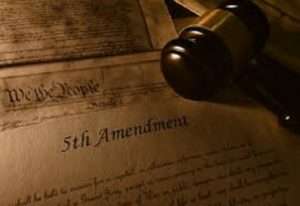

The Takings Clause of the Fifth Modification says the federal government might solely “take” non-public property for a “public use.” In circumstances like Berman v. Parker and Kelo v. Metropolis of New London, the Supreme Court docket has dominated (wrongly, in my opinion) that just about any potential profit to the general public qualifies as a “public use.” Thus, in Kelo the Court docket upheld the condemnation of properties for functions of selling privately owned “economic development,” though the event plan in query was so badly flawed that the condemned property ended up (for a few years) getting used solely by a colony of feral cats.
However the Kelo majority additionally indicated {that a} taking can nonetheless be invalidated if the federal government tries to “take property under the mere pretext of a public purpose, when its actual purpose was to bestow a private benefit.” Below Kelo, pretextual takings are an exception to the final rule that the federal government can condemn property for nearly any purpose.
How do courts decide whether or not a taking is pretextual? Since Kelo, lower-court selections on that challenge have been everywhere in the map. In Chapter 7 of my e book The Greedy Hand: Kelo v. Metropolis of New London and the Limits of Eminent Area, I recognized not less than 5 totally different approaches to this challenge adopted by state and decrease federal courts since Kelo (see additionally this text).
Most pretextual takings circumstances cope with conditions the place the federal government condemns property for switch to a non-public get together. However in Brinkmann v. City of Southold, the US Court docket of Appeals for the Second Circuit addressed a case the place a condemnation for switch to public possession would possibly nonetheless be pretextual, as a result of the official rationale was a fairly apparent smokescreen for a distinct motive.
Outstanding takings litigators Michael Berger and Robert Thomas have useful summaries of the details and what the courtroom determined. This is Thomas:
The details of the case are fairly easy. The Brinkmanns needed to construct an enormous field ironmongery shop on a 1.7 acre vacant parcel. The standard objections from space residents and the City itself appeared (you recognize the drill): a retailer like this may lead to an excessive amount of extra visitors (visitors research stated no), particular permits and affect research are wanted (the house owners started to conform), a moratorium on constructing permits in a one-mile radius, “despite the county government’s finding that the moratorium lacked supportive evidence’ (oops). Slip op. at 3. Even a failed attempt by the Town to buy the property itself before the Brinkmanns closed their purchase.
When all those didn’t succeed in stopping the development, the Town began proceedings to forcibly acquire the land by eminent domain. What for, you ask? A public park. More precisely, a “passive use park.” What’s that, you ask? It isn’t what you might think make a typical public park. Things like public facilities, art installations, walking trails, recreational and entertainment spots and stuff. No, this was to have none of those things, it was to be “a park with no vital services or enhancements,” also known as a big open, empty field.
Next step was a federal court section 1983 action by the Brinkmanns, “alleging a pretextual taking in violation of the Takings Clause of the Fifth Modification.” Slip op. at 4. The Town may have claimed that the taking was for a “traditional” public use (a public park, even if it is a “passive use park”), but the Town’s actual reason, the Brinkmanns alleged, was what we call a “spite taking”—the Town didn’t like the use we’re making or going to make of our property, so decided to take it from us. This was the real motivation to take our property, and that’s not a public use, according to the complaint. The district court wasn’t having any of it, and dismissed for failure to state a claim.
A divided panel of the Second Circuit affirmed. This “pretext” thing you allege, property owner, is merely a “passing reference….” And we all know that when the legislature has declared that a certain use or interest is a public one, the courts have no role because “the general public curiosity has been declared in phrases well-nigh conclusive.” Slip op. at 7 (quoting Berman v. Parker, 348 U.S. 26, 32 (1954)). Taking property by eminent domain is just legislation, property owners, so go make your fight in the political process. Don’t bother the courts.
“There may be no dispute {that a} public park, even an unimproved one, is a public use.” Slip op. at 8. The court distinguished between pretext for private benefit, and pretext for some use that isn’t public….
The majority focused on the complaint’s assertion that the Town’s supervisor stated, “I’ll by no means permit something to be constructed on this property.” Id. In the majority’s view, that statement revealed that the Town’s motivation was just fine, because it didn’t matter that the taking was for spite, as long as it wasn’t for a private use or purpose. As the opinion put it, “Plaintiffs haven’t pointed to any City goal that violates the Takings Clause…”
In short (and this is our characterization, not the court’s), the Fifth Amendment contains a Public Use Clause, not a “Good Motivation Clause…”
The key point in the majority opinion is that a taking can only be pretextual if the official rationale is a pretext for a scheme to benefit a private party. If, however, the government condemns property and does not transfer it to a private party or try to benefit such a party, then it doesn’t matter whether the official stated purpose was the real motive for the taking or not.
The dissenting opinion by Judge Steven Menashi argues that a taking can be pretextual even if there is no plan to benefit a private party:
The court emphasizes that “[p]ublic parks have been acknowledged as a ‘public use’ for greater than a century” and that a court should not “substitute its judgment for a legislature’s judgment as to what constitutes a public use…” But no one disputes that a public park would be a public use. The plaintiffs instead argue that the Town of Southold does not want a public park. The court admits that the plaintiffs are right. The court acknowledges that the complaint in this case “alleges details enough to assist a discovering that the choice to create the park was a pretext for defeating the Brinkmanns’ business use” of their own property and that the Town decided to seize the Brinkmanns’ property for a park only “after assorted objections and regulatory hurdles that the City interposed and that the Brinkmanns did or may surmount….” In other words, the Town did not like what the owners were doing with their property, but the Town was unable to muster the political support to pass a zoning law or to deny a permit. So the Town of Southold grabbed the land for itself….
The Constitution has nothing to say, according to the court, “when a property is taken for a public amenity as a pretext for defeating the proprietor’s plans for one more use…”
That is incorrect. In my view, the Constitution contains no Fake Park Exception to the public use requirement of the Takings Clause. A taking of property must be “for public use,” U.S. Const. amend. V— or at least for “a public goal,” Kelo v. City of New London, 545 U.S. 469, 478 (2005)—and thwarting the rightful owner’s lawful use of his
property is not a public purpose. I dissent.
Menashi goes on to point out (correctly) that Supreme Court precedent allows scrutiny of government motives in a wide variety of other cases (e.g.—when seemingly neutral policies are pretexts for efforts to engage in unconstitutional discrimination on the basis of race or religion). He also cites various state court cases where takings for pretextual motives were invalidated, even in some situations where the condemned property was not transferred to a private party. The majority distinguishes those cases on the grounds that they dealt with state constitutional law, had somewhat different facts, or were different for other reasons.
Having written a book and numerous articles on public use issues, I rarely run across a public use case where I’m unsure what the right outcome should be. But this is one of those rare times.
Pretextual takings doctrine is a mess generally. But I think it can legitimately be used to strike down a variety of takings for transfer to private parties; indeed, I believe most such takings are unconstitutional even aside from the pretextual motives, because I support the “slender” view of “public use” under which the government may only take property for publicly owned facilities or private ones that have a legal duty to serve the entire public.
In most situations, the narrow view is satisfied when the government takes property for public ownership—even if the motive for the taking is unrelated to the potential benefits of the new use. So far, I side with the majority. But this case is different from most takings for public ownership because the government isn’t actually using the condemned property for anything. As Judge Menashi puts it, the supposed “public park” is actually “pretend.”
This opens up the possibility there can be public ownership without public use. To be sure, there can sometimes be “use” even if the government doesn’t build anything on the land it takes. For example, it could decide to use the property as a nature preserve. But there is no such use here, not even a “passive” one. The only goal is to block the Brinkmanns’ plan to build a hardware store, not to use the land for any affirmative purpose.
Perhaps such blocking can still be a “use.” However the challenge is a troublesome and murky one.
Each Robert Thomas and Michael Berger recommend the Supreme Court docket would possibly take up this case. Pretextual takings jurisprudence has lengthy been a large number, and not less than 4 Supreme Court docket justices have expressed curiosity in clearing it up, and maybe overruling or limiting Kelo within the course of.
I very a lot hope the Supreme Court docket does clear up the mess and—higher nonetheless—overrules Kelo. However this case shouldn’t be a superb automobile for that.
In contrast to Kelo, it doesn’t deal with the difficulty of condemnations for switch to personal events.It as a substitute offers with the bizarre state of affairs the place the federal government retains the condemned property however has no want to do something with it apart from block a non-public use it objects to. The difficulty is a particularly troublesome one. And even when the Court docket resolves this difficult query accurately, doing so wouldn’t do a lot to enhance public use doctrine extra typically.
For these causes, I would favor the Supreme Court docket take up a public use case whose details are extra much like these of Kelo. On the very least, it ought to contain the condemnation of property for switch to a brand new non-public proprietor.

